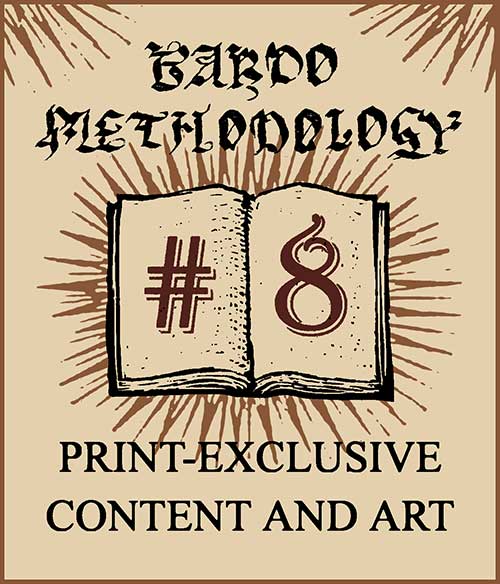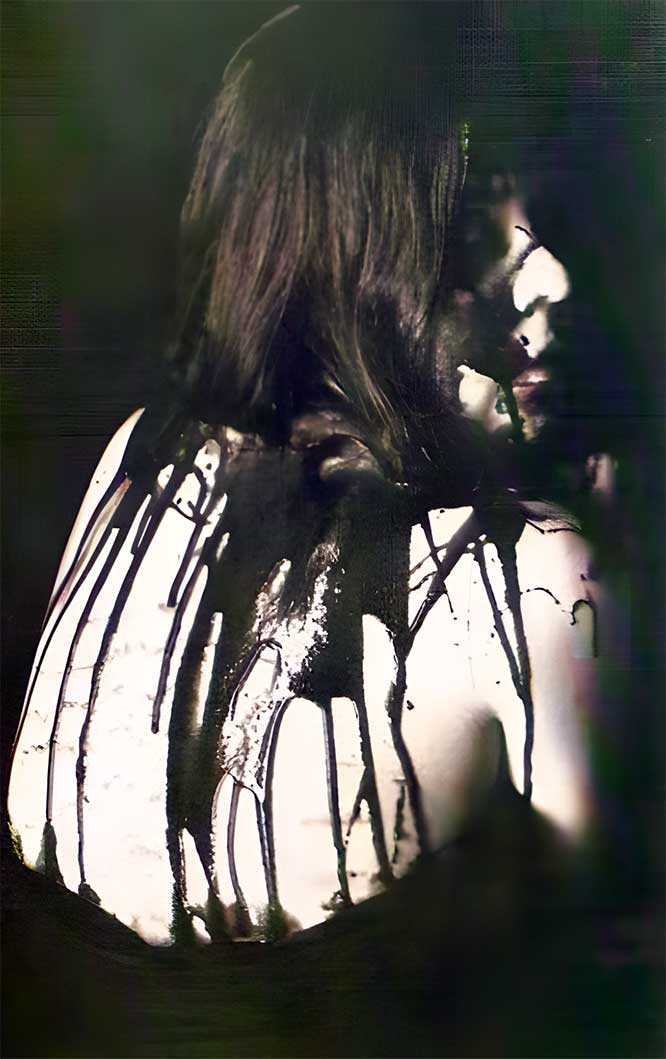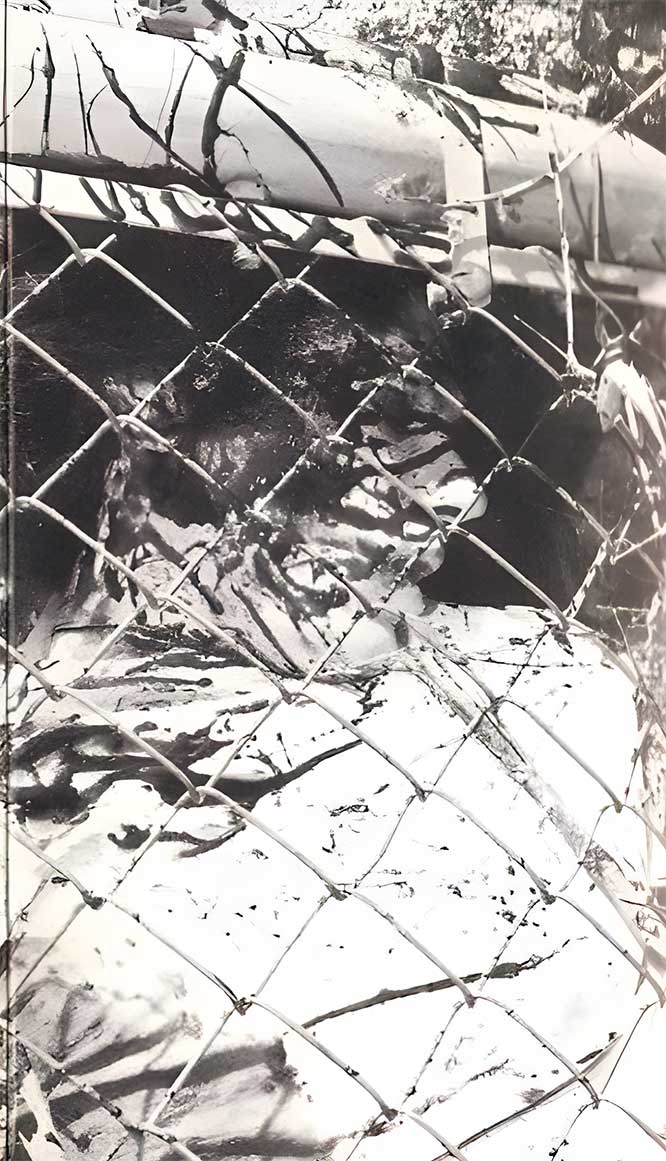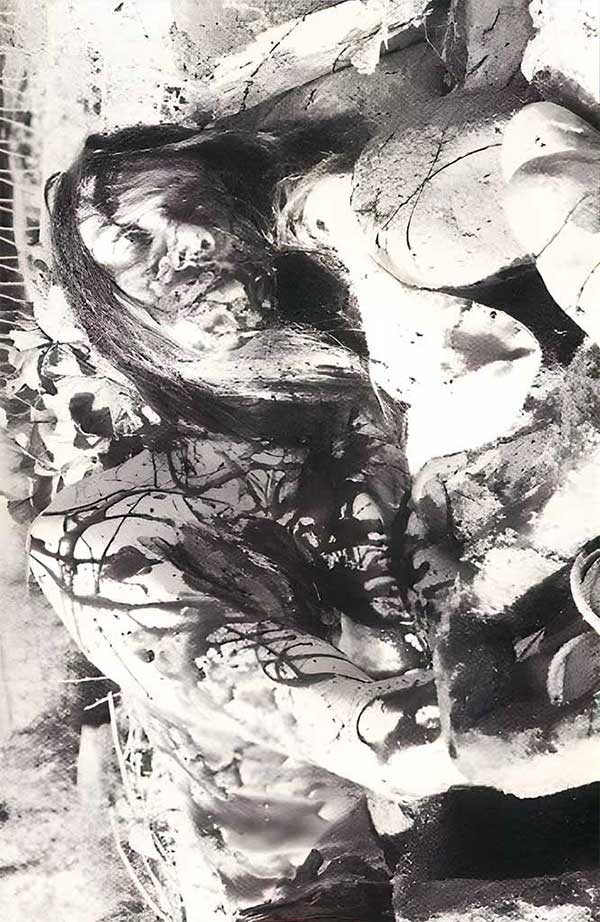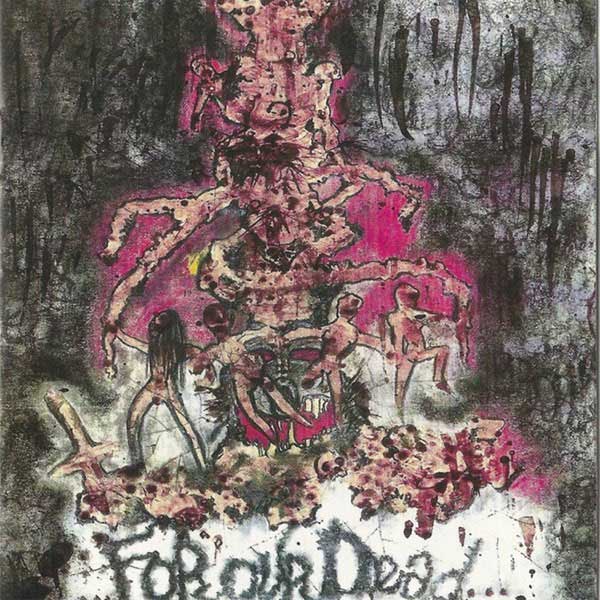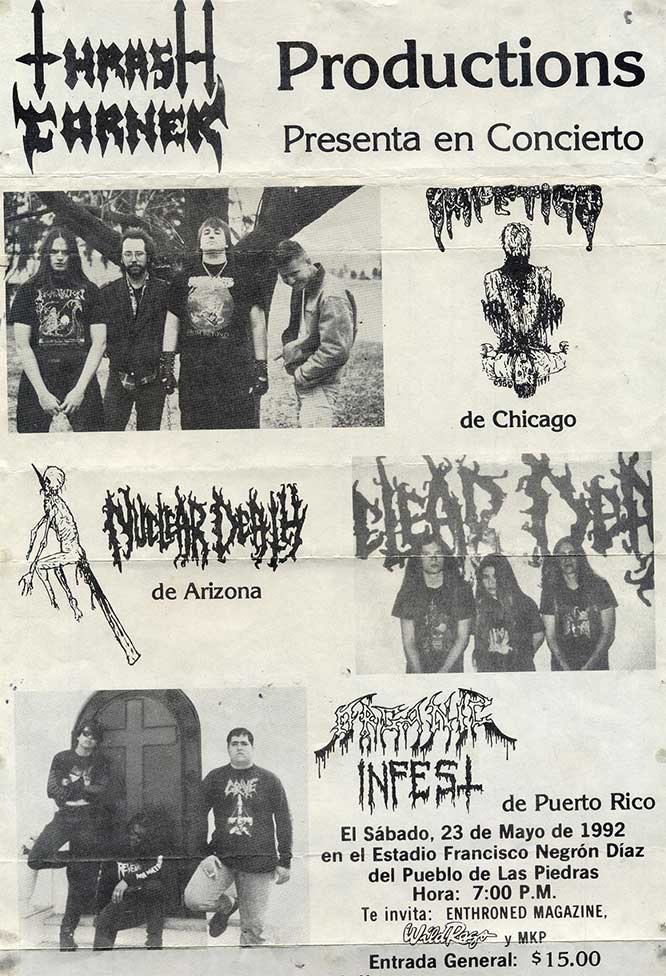Nuclear Death V
2025-07-22
by Niklas Göransson
Before the fracture came revelation. Nuclear Death’s final recording as a trio moved with dirgelike weight, flickering cadence, and instincts newly awakened; For Our Dead was both artefact and omen.

LORI BRAVO: Phil wrote most of the riffs, and then we arranged everything together. Once Steve joined, he introduced me to all these older musicians who’d influenced him. That’s partly why our sound grew so much after “Carrion…” – Steve brought a broader grasp of styles.
When Steve Cowan replaced Joel Whitfield on drums in late 1990, NUCLEAR DEATH’s second album, “Carrion for Worm”, was almost composed in its entirety. As the trio began working on a new EP, it became the first material Cowan helped shape from the start.
LORI: Suddenly, I could listen to the music I’d wanted to hear but hadn’t been allowed to: Jimi Hendrix, old Alice Cooper – and I mean old, when he was still blonde – Janis Joplin, Miles Davis. Steve had my back, so Phil couldn’t tell me what to do anymore; that opened up so much.
Lori has cited Miles Davis, Jimi Hendrix, and Janis Joplin as her childhood’s holy trinity of music: Davis for tonal depth, Hendrix for guitar expression, and Joplin for vocal power.
LORI: To quote Miles: Never make the same album twice. A true artist always grows, and Phil struggled with that. Not intellectually – I mean, the guy was a walking library, but I think he doubted his musicality, questioning whether he could keep up as our style evolved. Which is wild, considering what he’d already pulled off on guitar.
Do you mean ‘keep up’ in terms of technical difficulty?
LORI: No, but since neither of us is a musician in the traditional sense, I couldn’t fully explain the symphonic madness swirling around in my head. Steve, on the other hand, had this intuitive, mind-meld thing going. I loosely described the energy I wanted to tap into, and he got it instantly. ‘Oh, like Miles Davis?’ Spot on – I was thinking specifically of “Agharta”.
Dark and brooding, Miles Davis’s 1975 double LP “Agharta” is a concoction of jazz, funk, and ambient psychedelia. The use of wah pedals, distortion, and other effects gives its long, improvisational pieces an almost proto-industrial or noise-rock quality.
LORI: Not that Steve listened to it constantly, but he understood such music – he was a jazz drummer, after all. Phil, on the other hand, might not have even heard of Miles Davis. He certainly didn’t want me listening to him. As I said, maybe Phil feared he wouldn’t be able to play outside his usual style.
These influences surfaced in the new material, as NUCLEAR DEATH began incorporating modulation effects, flanger textures, and a more dirge-like, disorienting, and hallucinogenic atmosphere.
LORI: Actually, leading up to the EP, all three of us went up into the mountains – far enough from city lights to really see the sky – and tripped on mushrooms together. Full moon, stars out: we ate, waited, and then boom! ‘Whoa!’ <laughs> Total mind-expansion. That probably explains some of the vibe you’re hearing.
Was this devised specifically with musical purposes in mind?
LORI: Yes, Steve wanted to push NUCLEAR DEATH to our limits, creatively and otherwise – especially Phil. In some ways, he reminded me of an old man: all crotchety and deeply set in his ways, stoic and stubborn. So yeah, we basically tried lighting a stick of dynamite under Phil’s ass.
Psilocybin, the active compound in psychedelic mushrooms, reduces activity in the brain’s default mode network – the system linked to rigid thought patterns and self-referential processing. In creative contexts, this often loosens perceptual boundaries, enabling novel associations and greater openness to experimentation.
LORI: And you know what? It kind of worked because it really opened Phil up. He started experimenting with different pedals – like the flanger, for example – which he’d previously refused to touch. We were holed up in Steve’s backhouse, writing and recording raw takes. That period marked a real evolution for us.
Did the mushroom trip have any impact on Phil’s lyrics?
LORI: I’m not sure – he’d already written most of them. And these stories were great, just like on the first two albums. By the time we approached the EP, I’d been stepping up more as a lyricist but wasn’t quite ready yet. Phil had a few finished pieces, so I said, ‘Alright, this works.’
Following Phil’s last-minute artwork effort on “Carrion for Worm”, Lori seized control over NUCLEAR DEATH’s visual expression.
LORI: Steve said to me, ‘Lori, you’re a fine artist.’ And I went, ‘Yes, I know.’ He goes, ‘So why aren’t you handling the artwork?’ I realised, ‘Damn, Steve is right.’ When I told Phil I wanted to release an EP dedicated to our fans called “…For Our Dead…”, he said, ‘I don’t even know what kind of cover I’d make for that.’ I replied, ‘You’re not doing it; I am.’
Did you have a specific design in mind?
LORI: I was completely over the black-and-white aesthetic – it needed to go. My birthday is in May, so I came up with the idea of a maypole made from our entrails. I even included Feral Viscera as a nod to NUCLEAR DEATH’s earlier characters. I wanted to push it further and show that I was a real artist.
To complement Lori’s flesh art on the cover, the back was adorned with real blood.
LORI: I kept a canvas in Steve’s backhouse, where NUCLEAR DEATH rehearsed. That night, we all cut ourselves and pressed our hands together. At the time, I thought maybe Phil would stay with us. I mean, we’d been together six years. He adored me… to the point of abuse, sure – but we’d still had our thing.
Steve Cowan’s first show with NUCLEAR DEATH took place in Phoenix alongside EXECRATION in November 1991 – a full year after he joined, and five months after “Carrion for Worm” came out. It’s quite baffling how little interest there seems to have been in booking NUCLEAR DEATH for gigs.
LORI: Tell me about it! Knowing what I do now, I can’t believe it either. But hey, what can you do? We were never offered a tour – not once. It just wasn’t how things worked for us. Michigan Deathfest was the only invitation we ever received, and even that came through a fan.
One month later, NUCLEAR DEATH entered Chaton Recordings in Scottsdale, Arizona, to record “…For Our Dead…” – the band’s first studio session to be tracked live, with everyone playing together. Joel had apparently suggested this approach earlier, but it wasn’t implemented until after he left.
LORI: For “Bride of Insect”, Joel was like, ‘Why don’t we just record together?’ That’s drummers for you – always wanting to do things live. It made sense to me. Phil didn’t care either way; he was flexible as long as it got done. But the people recording us? We couldn’t get them on board.
Not even Joe Crow?
LORI: No, Joe talked us out of it. Claimed to know what he was doing – and based on the demo, we believed him. Then with “Carrion for Worm”… forget it. Billy wouldn’t have agreed to live tracking if you’d held a gun to his head. That just wasn’t how things were done.
Having now tried both methods, do you have a preference?
LORI: Honestly, the band connection feels more vibrant when you can see each other. Especially with NUCLEAR DEATH – there was a certain vibe between us, an unholy trinity. Working off rough tracks and isolated takes doesn’t sit right with me. Plus, I didn’t want to be separated from my boys.
This time, Lori wasn’t fighting a fever – and it shows. Her voice moves freely across its full dynamic range. On “Days of the Weak” in particular, she shifts effortlessly between guttural growls, gasps, and shrieks. Furthermore, the production itself is a considerable step up from “Carrion for Worm”.
LORI: Steve actually understood engineering. He knew what belonged where, why certain things wouldn’t work, and how to structure a mix so it made sense, technically and emotionally. Steve helped me find subtlety. We sounded our best with everything properly balanced – it became more musical.
When Wild Rags released “…For Our Dead…” in May 1992, it marked Lori’s first full takeover of the band’s visual presentation. Alongside the artwork, she also handled the promo photos.
LORI: I wanted to elevate NUCLEAR DEATH into high art. I said, ‘Let’s do something real!’ and came up with the crime scene concept: us lying around, murdered. Phil, of course – with his homophobic hang-ups – protested immediately. ‘I’m not wearing makeup!’ I’m like, ‘Get over it, motherfucker.’ <laughs>
Ultimately, they reached a compromise: no makeup, just fake blood.
LORI: We went into Steve’s backyard, behind the practice house, and my brother shot those now-iconic photos. I love them – especially the one with blood running down my back. It’s really sexy. Leave it to my brother to make me look good.
That same month, NUCLEAR DEATH travelled to Puerto Rico for a show. In a rare display of promotional initiative, Wild Rags Records partly organised the gig.
LORI: We flew Southwest from Arizona to Miami, checked in for our connecting flight – and that’s when things got sketchy. We boarded this tiny, rickety plane with maybe sixteen seats. And the rain? It fucking poured; I’d never seen anything like it. Coming from the desert, rainfall was a novelty to us.
After landing, the band was picked up by an extremely enthusiastic promoter.
LORI: Man, Puerto Ricans do not give a fuck. These dudes rolled up like, ‘Yeah, get in the car!’ So we did – in the middle of a crazy rainstorm. They had this giant DEICIDE sticker plastered across the windshield, edge to edge. I’m thinking, ‘How the hell can he even see the road?’
log in to keep reading
The second half of this article is reserved for subscribers of the Bardo Methodology online archive. To keep reading, sign up or log in below.

